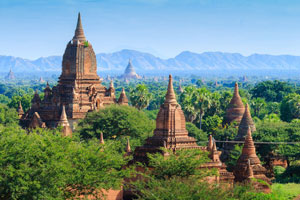Naypyidaw, Myanmar: relocation guide for expatriates
Relocate to Naypyidaw is a fascinating challenge. While planning your expatriation, you will have hundreds questions on you mind. This relocation guide has been divided in different sections in order to help you easily find the answers you are looking for about the capital of Myanmar.
Introduction to Naypyidaw
Naypyidaw is what most people will call a clean slate. After being declared by the army as the capital of Myanmar in 2005, Naypyidaw replaced Yangon and became the nation’s capital. Being in a relatively new city, expats need to brace themselves for the lack of infrastructure, commercial developments and support. Even today, Naypyidaw is the home of no more than one million inhabitants despite its large geographical size of 4,800 square kilometres.
The city was originally built from sugarcane fields and rice paddies to transfer Myanmar’s capital from Yangon. Naypyidaw, at a glance, has everything it needs to be a capital: wide highways, modernised government buildings, five-star hotels and large shopping malls but seems to be lacking one vital component: people. Journalists and tourists who have been to Naypyidaw often refer to it as the ‘Hollow or Post-Apocalyptic City’ because the streets are always almost empty aside from the occasional appearance of street sweepers and Burmese workers walking to and from their work.
Looking on the bright side, Naypyidaw can also be full of opportunities. Entrepreneurs, for example, benefit from the lack of competition and stand the chance to dominate the local market. Due to the small population, sectors such as e-commerce, which also draw revenue from other cities, will be more sustainable. Big dreamers can step up to the challenge of bringing in tourists – something that the government has been unable to overcome – by starting up attraction spots. Meanwhile, independent expats seeking a new lease of life and a place to rough it out will also appreciate its quiet serenity.
Expats who are about to move Naypyidaw should expect a tropical monsoon climate that is divided into three seasons. The hottest season which is from February to May, the rainy season which is between the months of May and October then the best time of the year which is from October to February where the weather is cool and dry.

Though considered to be a cheaper than its fellow capitals in Asia, Naypyidaw is still the most expensive city in Myanmar. The cost of accommodations and transportation are high, but it will still hugely depend on your lifestyle and financial planning. The city also has its own Shopping Zone or commercial district where you will find the Myoma Market, Junction Centre and several restaurants.
The city’s name, which means ‘Abode of the King’, hints that it is where the important, government-related businesses occur. In Naypyidaw, you will see the famous Hluttaw, a huge parliament house consisting of 31 buildings. There is also the Water Fountain Park, which is an excellent attraction for you and your family. Visitors can climb the park’s tower and get a breathtaking view of the city. Water Fountain Park is best visited during sunset where you will see the main attraction fountain show that dances along with the local music.
Since Naypyidaw mostly serves as the seat of the Myanmar government and political activities, you should expect several restrictions due to security measures that are being strictly implemented. You will immediately notice warning signs scattered across the city which tells tourists and visitors not to trespass. The two areas that you should refrain from going without permission is the Military Zone, home of high-ranking military officials and the Ministry Zone where the government ministries are situated. Naypyidaw is also strict when it comes to photography where tourists are not allowed to take photos of public or government buildings and military officials.
Naypyidaw’s very existence gave birth to many rumours and conspiracy theories. Speculations include it being a “vanity project” executed to compete with other prospering countries, a result of an advice given by a fortune-teller to a superstitious politician, and even as a precaution against a US invasion via the seas in Yangon.
Know more about this beautiful world capital from the information below:
This relocation guide is provided by http://www.expatfinder.com, copyright © 2016 Interexpat Pte. Ltd. All rights reserved. Neither Interexpat nor S.A.S. ACS can be held liable for any errors or omissions, or any loss, damage that may occur as a result of this information. This information does not constitute advice.

